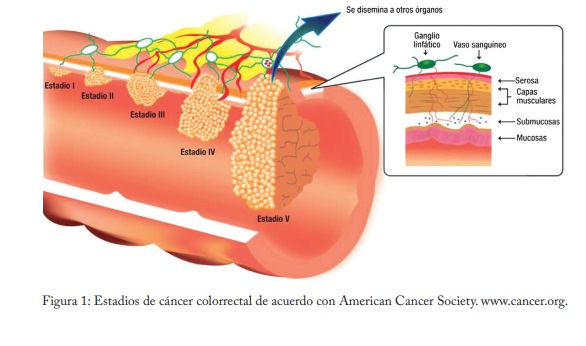Colon cancer
from Praxagoras to robotic surgery
DOI:
https://doi.org/10.31837/relatos/13Keywords:
cancer, colon, robotic surgery, laparoscopic surgery, anatomy, etiopathogenesis, treatment, Uruguay, statificationAbstract
Diseases of the colon include a huge range of functional and organic pathological states, inflammatory and
tumors, medical and/or surgical treatments both in urgency and in coordination, which surgeons face with increasing frequency. Due to the important diversity of pathologies that occur in this sector of the digestive tract and that generate great challenges for its correct treatment, the surgeon needs specific and updated training.
Colorectal cancer is one of the neoplasms with the highest incidence and mortality today. Although in times colon tumors were described in ancient Egypt and other cultures, it was not until the 18th century that develop the treatment of this disease, mainly linked to a better understanding of the anatomy and organ pathophysiology. Treatment options for colorectal cancer have evolved significantly up to our days, since the first successful colon cancer resection was published in 1833. With the passing of time and the evolution of knowledge, conventional surgery has gradually developed, currently achieving established and accepted quality standards throughout the world. The change in the paradigm "to large incisions, large surgeons", in search of offering a better quality of care with less tissue trauma and faster recovery, led to the appearance of minimally invasive surgery. The development of the laparoscopic approach described more than 100 years ago by Hans Christian Jacobaeus (1879-1937), a Swedish internist in 1910, has now been consolidated as a diagnostic and therapeutic tool. Despite this new approach being known, it was not until 1981 that the first successful minimally invasive surgical procedure was performed, an appendectomy performed by the German gynecologist Kurt Kart Semm, a fact that led to the request for the suspension of medical activity at the time. of the German Association of Surgeons. He today is considered the father of Modern Laparoscopy. The implantation of the laparoscopic approach in colonic pathology was carried out in 1990, by Moises Jacobs in the USA, who reports the first laparoscopic colectomy for benign pathology. However, its acceptance for treatment in malignant pathologies has been slower and has often been criticized due to the need to demonstrate that oncological principles are met, with similar percentages of complications and the same long-term results are obtained.
Despite the difficulties and framed in the immediacy imposed by the social context, where it also takes on special
the aesthetic result is relevant, with less morbidity and risks, and rapid return to work, this new approach to
achieved rapid acceptance by the community in general and surgeons in particular. Undoubtedly, this new type of approach, called laparoscopy, is currently considered one of the great advances in modern surgery. It has also meant a fundamental change in postoperative recovery, in morbidity related to surgery, with lower cost and better quality of care. The fundamental objective of minimally invasive colon cancer surgery is to achieve similar oncological results and a better quality of life for patients, reducing both the trauma on the abdominal wall, with less possibilities of hernias and infections, less pain and, consequently, a faster recovery.
In this same line of thought, other forms of minimally invasive approach arise: through a robot (2002), endoscopic surgery through natural orifices (NOTES 2004) and single port surgery, the latter 2 still without consensus on its use for colon cancer. Robots in surgery offer a new way of practicing it, it is called robotic surgery and is considered by many authors as the future of surgery. Despite being a relatively new procedure in surgical practice, it has made important advances in a short time with great impact on the community of surgeons because it has numerous advantages that help improve surgical techniques and promote the teaching of surgery.
Robotic surgery offers clear advantages over laparoscopic surgery, three-dimensional vision, greater dexterity,
use of articulated instruments, greater range of movements, decreased tremor, better point of support and a comfortable ergonomic position for the surgeon, also offering the possibility of telesurgery (surgeons operating remotely), which especially facilitates teaching. These improvements make it possible to manipulate tissues and operate more more accurate, with better results for patients. The main disadvantages of this new surgery model are their high cost, their size, their delicate connections prone to damage, and the difficulty in addressing different it is abdominal regions in the same patient, which require disassembly and reassembly of instruments, prolonging surgical and anesthetic time. In our environment this technology is not yet available for the treatment of surgical pathologies. Undoubtedly, these advances in the surgical treatment of colon cancer, added to the appearance of new adjuvant treatment protocols, have achieved an improvement in the evolution and prognosis of affected patients, due to a significant reduction in complications and mortality and an increase in long-term survival.
Although it is difficult to envision the future of surgery, we believe that education is the first step towards the safe use of
automated medical technology, we must renew undergraduate and postgraduate training. We are in a new universe of surgery, where interdisciplinary work is essential and primary, and human-machine interaction (protocolization and automation, robotic surgery, image guidance and simulation) are essential to improve the results in surgical care. For this, it is essential to have a surgical block (Hybrid Operating Rooms) with facilities equipped with complete surgical capabilities, CT and MRI scanners, fixed C-arms, associated with other techniques (ultrasound, fluoroscopy, endoscopy) and personnel trained in their use. them and surgical procedures.
Downloads


